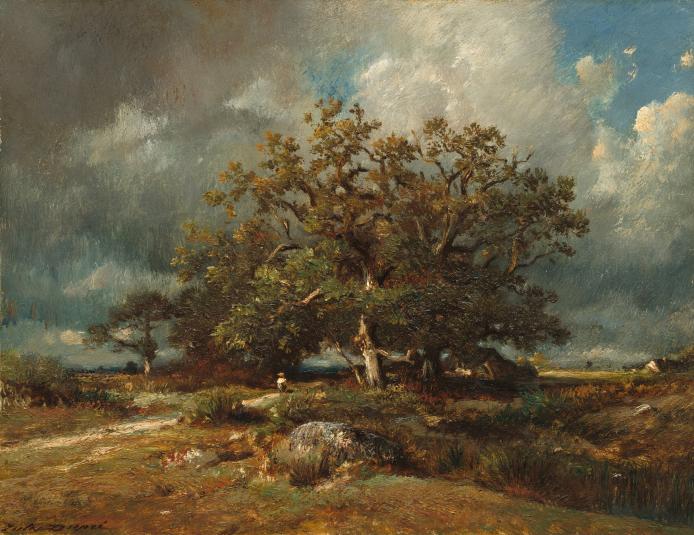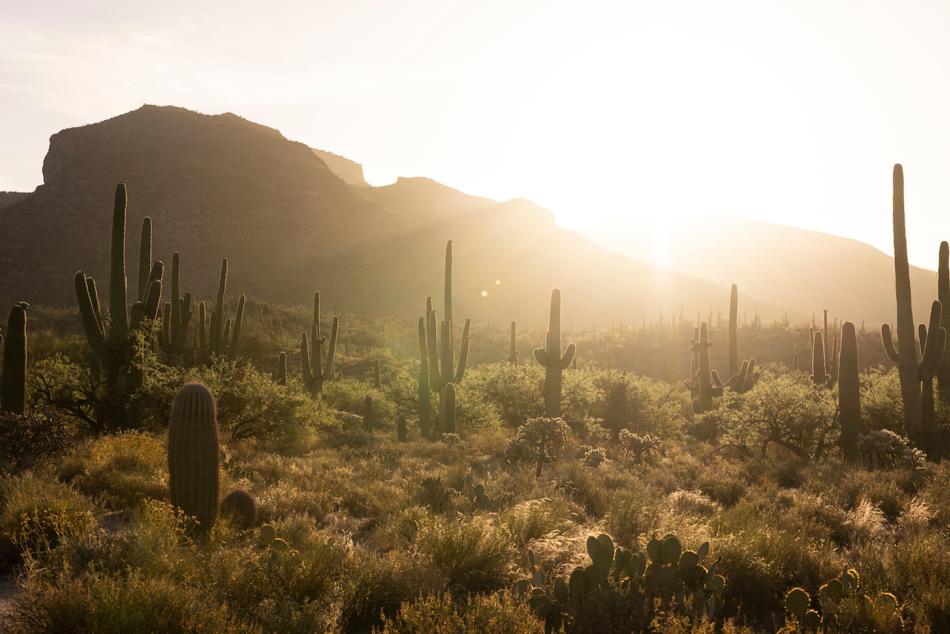Portraits of Trees, a Favorite Subject of Artists

Have you ever fallen in love with a tree? You wouldn’t be the first. Henry David Thoreau “fell in love with a shrub oak,” and many artists have been charmed by these natural sculptures. Our collection includes hundreds of works featuring maples, redwoods, willows, and oaks. In several of them, trees aren’t just a detail, but the main subject.
Take a look at these loving and lively portraits of trees. Artists like Ansel Adams, Albert Bierstadt, Sally Mann, and Claude Monet are known for their depictions of the natural world. Others on this list may be more unexpected, but they also showed their admiration for trees: Alex Katz, Gordon Parks, and Mark Rothko.
We’ve organized the works by medium, so you can compare the works of different painters, photographers, and printmakers. We’ve even highlighted the works on view in our galleries, so you can try a visual version of tree hugging on your next visit. Since it’s Earth Month, may this virtual forest serve as a reminder of our duty to conserve our trees.
Trees to See
You can find these trees in our galleries right now. Paintings by French impressionist Claude Monet and German-American Hudson River School painter Albert Bierstadt are no surprise—both are known for images of nature, including gardens, mountain ranges, and of course, trees. Other works might be a little more unexpected. While American artist Alex Katz is recognized for figure paintings, he has also painted many scenes of Maine. Swamp Maple (4:30) features a single sapling. Katz left the cracked paint untouched to look like the tree’s rough bark.
If you’ve visited our Sculpture Garden, you may have been surprised to see a tree made from an unusual material―stainless steel. American painter and sculptor Roxy Paine’s work is called Graft, a reference to the process of joining one tree or plant to the bud, stem, or root of another. From a certain angle, you can see one set of the tree’s branches stretch straight up; others are twisted and extend more horizontally. The sculpture comes from Paine’s series, Dendroids (which refers to branching like a tree).
One of the best galleries for tree lovers is gallery 93 on the West Building’s Main Floor. Almost all the works there—by artists such as Horace Vernet, Jean-Baptiste-Camille Corot, and Narcisse Virgile Diaz de la Peña—show the French painters’ admiration for the woods.
Paintings of Trees
One of the most regal portrayals of a tree in our collection has to be French painter Jules Dupré’s The Old Oak. Dupré spent most of his career painting landscapes ranging from sparsely wooded plains to lush forests. He honors the giant oak by placing it at the center of his composition with a small figure walking by for scale.
Dutch landscape painter Jacob van Ruisdael is known for paintings of massive trees towering above a rocky countryside. In Forest Scene, a split birch tree in the right foreground symbolizes the fact that life is fleeting and death is inevitable.
Hudson River School painter Thomas Cole’s Tornado in an American Forest is similarly somber. Split and uprooted trees show destruction from a tornado. Look closely to the left and you’ll see a small figure who may have been protected by the giant trees.
Photographs of Trees
Many photographers have been inspired by the towering trees in California’s Yosemite National Park. Binh Danh explored his connection to American landscapes as a Vietnamese American when he made his daguerreotype, Sugar Pine Tree, Yosemite, CA, April 2, 2012. Yosemite is also where photographer Carleton E. Watkins took his picture of the famous Grizzly Giant sequoia. Watkins made some of the first photographs of these landscapes, shaping our understanding of the American West. His images influenced the establishment of the national park. Ansel Adams first began using a camera when he visited Yosemite at age 12. His later photographs of America’s landscapes helped campaigns advocating for the expansion of the national parks.
Maybe one of the most famous photographs of a tree is Sally Mann’s Deep South, Untitled (Scarred Tree). Mann focused her lens on the gash in the tree’s trunk. The healed, but still visible, wound reminds us that trees are “silent witness” to history, vessels for memory. In this work, the American photographer is also referencing French photographer Gustave Le Gray’s Beech Tree, Forest of Fontainebleau.
Drawings and Prints of Trees
American painter, printmaker, and pastelist Sylvia Plimack Mangold has spent decades observing the trees around her studio. Her beautiful woodblock The Nut Trees shows two bare trees against a swath of marigold. The Oak by American realist painter Andrew Wyeth is so detailed, it’s hard to believe it is a drawing. Made with watercolor, gouache, ink, and graphite, Wyeth’s drawing looks up the trunk of a tree so tall we can’t even see the top.
You may be surprised to find a work by American artist Mark Rothko here. While most are familiar with his abstract paintings, Rothko also made figurative watercolors (depicting things we recognize), some of which will be included in our upcoming exhibition Mark Rothko: Paintings on Paper.
American painter and printmaker Joseph Norman has made many works of trees and forests. His untitled lithograph shows densely tangled branches, each with a different bark pattern.
You may also like

Article: From Old Car Tires, Chakaia Booker Reveals Beauty and Devastation
Transforming discarded tires into monumental sculptures, the artist reflects on the environmental impact of our daily commutes.

Article: Sentinels and Sprawl: Photographs of the Saguaro Cactus
As the presence of humans changes the Sonoran Desert, photographers capture the impact on the saguaro cactus.



























